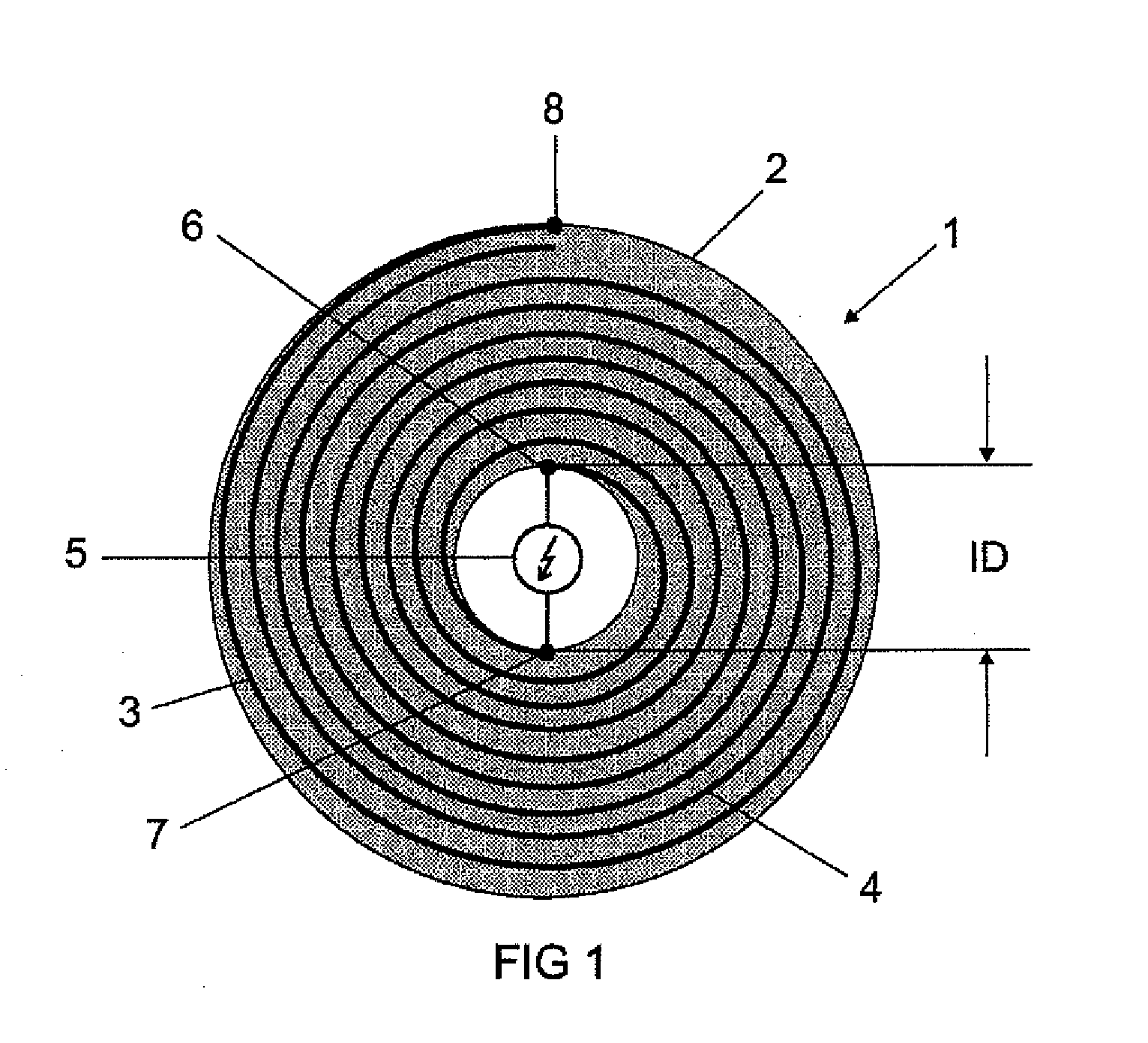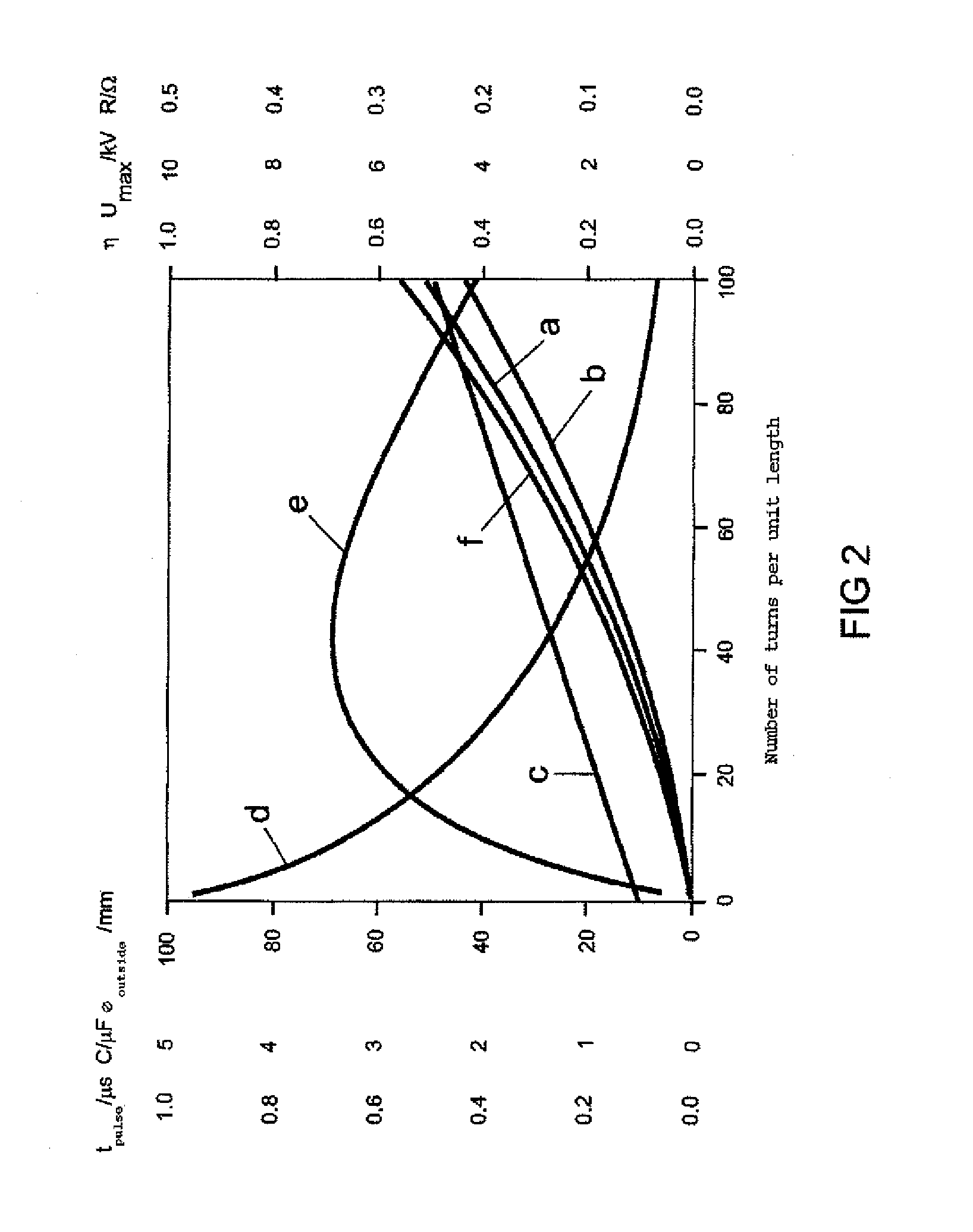High-pressure discharge lamp comprising a high-voltage impulse generator and method for producing a high-voltage impulse generator
a high-voltage impulse generator and discharge lamp technology, which is applied in the direction of electric pulse generators, gas-filled discharge tubes, railway signalling, etc., can solve the problems of insufficient base, inability to accept, and probability of lamp damage, and achieve high dielectric constant , high capacitance of spiral pulse generators, and large temporal width of pulses.
- Summary
- Abstract
- Description
- Claims
- Application Information
AI Technical Summary
Benefits of technology
Problems solved by technology
Method used
Image
Examples
first embodiment
[0046]After the production of the actual spiral pulse generator, a partial ferrite layer of suitable thickness is now applied thereto in accordance with the invention. To this end, the spiral pulse generator is dipped into a low viscosity slurry made from ceramic ferrite material. After drying out the slurry, there is formed on the annular surface a ferritic layer that is subsequently sintered at temperatures between 800° C. and 900° C. The process can be repeated several times in order to form a thicker ferrite layer. However, a plurality of dipping processes can also take place between the sintering processes, in order to accelerate the entire coating process.
[0047]Owing to the fact that the ferrite layer is burnt in in a dedicated sintering process, a firm surface connection to the spiral pulse generator is formed. FIG. 9 shows a spiral pulse generator 31 having such a ferritic layer 35.
[0048]The following ferrites come into consideration as ferritic materials:
Ceramic ferritePerm...
second embodiment
[0054]In a second embodiment, the spiral pulse generator is completely or partially encased by a ferritic sealing compound.
[0055]The sealing compound consists of a polymeric substance system that is filled with ferritic powder at a fraction of 10% up to 80%. The spiral pulse generator itself in this case preferably consists of a capacitively acting ceramic material with an ∈r of 4 to 2000. Here, the ferritic sealing compound preferably has a permeability μr from 1 to 5000.
[0056]The following polymeric substance systems come into consideration in principle for the binding:[0057]One- and two-component systems based on acrylic resins.[0058]One- and two-component systems based on epoxy resins.[0059]One- and two-component systems based on polyurethane resins.[0060]One- and two-component systems based on silicone resins.
[0061]The crosslinking of these sealing compounds can be performed via polymerization, polyaddition or polycondensation. The initialization of the crosslinking reaction is...
PUM
 Login to View More
Login to View More Abstract
Description
Claims
Application Information
 Login to View More
Login to View More - R&D
- Intellectual Property
- Life Sciences
- Materials
- Tech Scout
- Unparalleled Data Quality
- Higher Quality Content
- 60% Fewer Hallucinations
Browse by: Latest US Patents, China's latest patents, Technical Efficacy Thesaurus, Application Domain, Technology Topic, Popular Technical Reports.
© 2025 PatSnap. All rights reserved.Legal|Privacy policy|Modern Slavery Act Transparency Statement|Sitemap|About US| Contact US: help@patsnap.com



